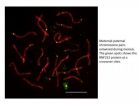(Press-News.org) EAST LANSING, Mich. — Hospital beds tend to get used simply because they're available – not necessarily because they're needed, according to a first-of-its-kind study that supports continued regulation of new hospitals.
Michigan State University researchers examined all 1.1 million admissions at Michigan's 169 acute-care hospitals in 2010 and found a strong correlation between bed availability and use, even when accounting for myriad factors that may lead to hospitalization. These factors include nature of the ailment, health insurance coverage, access to primary care and patient mobility.
In other words, the simple fact the beds were available led to higher use, said Paul Delamater, lead author and a researcher in MSU's Department of Geography. The study appears in the journal PLOS ONE.
"The findings support the regulation of hospital beds – of keeping the number of hospital beds aligned with the health care needs of the population," Delamater said.
Building new hospitals in Michigan requires approval from the state's Certificate of Need Program. Across the nation, 35 states have some form of CON program, with 28 states specifically regulating the supply of acute care hospital beds.
In Michigan, there are too many acute care hospital beds for the population, data show, and the CON Program in the past decade has rejected at least three requests for new hospitals in wealthy Oakland County.
Two of those hospitals were built only after their respective health systems won special legislative approval. In the latest case, McLaren Health System is currently appealing the CON Program's denial for a new hospital in Clarkston.
"Certificate of Need curbs unnecessary hospital construction and the higher health care costs that creates," Delamater said.
The study, which uses statistical models of the state of Michigan, is the first examination of hospital bed availability and use that addresses the geographic nature of the relationship. Unlike previous studies, the researchers modeled the entire acute care hospital system while accounting for the travel- and health-related behavior of patients.
The model can be replicated in other states.
"It has immediate statewide and potentially national implications," said Joe Messina, a study author and professor of geography. "To be able to demonstrate that the number of hospital beds predicts use – people have talked about this for years, but no one has been able to show it until now."
INFORMATION:
Study supports regulation of hospitals
2013-02-14
ELSE PRESS RELEASES FROM THIS DATE:
Clues to chromosome crossovers
2013-02-14
Neil Hunter's laboratory in the UC Davis College of Biological Sciences has placed another piece in the puzzle of how sexual reproduction shuffles genes while making sure sperm and eggs get the right number of chromosomes.
The basis of sexual reproduction is that a fertilized egg gets half its chromosomes from each parent — sperm and eggs each contributing one partner in each pair of chromosomes. We humans have 23 pairs of 46 chromosomes: so our sperm or eggs have 23 chromosomes each.
Before we get to the sex part, though, those sperm and eggs have to be formed from ...
Preventing obesity transmission during pregnancy
2013-02-14
A much neglected part of the obesity epidemic is that it has resulted in more overweight/obese women before and during pregnancy. Their offspring also tend to have higher birth weights and more body fat, and carry an increased risk of obesity and chronic diseases later in life. However, the nutritional factors and mechanisms involved pre and during pregnancy that may influence child obesity remain uncertain. A recent publication by ILSI Europe identifies and discusses key contributing factors leading to obesity.
In an article recently published in Annals of Nutrition and ...
Probiotic-derived treatment offers new hope for premature babies
2013-02-14
BETHESDA, Md. (Feb. 13, 2013)—"Good" bacteria that live in our intestines have been linked with a variety of health benefits, from fighting disease to preventing obesity. In a new study, Kriston Ganguli of Massachusetts General Hospital for Children and Harvard Medical School and her colleagues have discovered another advantage to these friendly microscopic tenants: Chemicals secreted by good bacteria that typically live in the intestines of babies could reduce the frequency and severity of a common and often-lethal disease of premature infants.
This disease, known as ...
Marsh plants actively engineer their landscape
2013-02-14
DURHAM, NC -- Marsh plants, far from being passive wallflowers, are "secret gardeners" that actively engineer their landscape to increase their species' odds of survival, says a team of scientists from Duke University and the University of Padova in Italy.
Scientists have long believed that the distribution of plants within a marsh is a passive adaption in which species grow at different elevations because that's where conditions like soil aeration and salinity best meet their needs.
But this team found intertidal marsh plants in Italy's famed Venetian lagoon were ...
Cellular renewal process may underlie benefits of omega fatty acids
2013-02-14
A search for genes that change their levels of expression in response to nutrient deprivation has uncovered potential clues to the mechanism underlying the health benefits of omega fatty acids. In the Feb. 15 issue of Genes & Development, Massachusetts General Hospital (MGH) researchers describe finding that feeding omega-6 fatty acids to C. elegans roundworms or adding them to cultured human cells activates a cellular renewal process called autophagy, which may be deficient in several important diseases of aging. A process by which defective or worn-out cellular components ...
Vanderbilt study reveals clues to childhood respiratory virus
2013-02-14
New Vanderbilt-led research published in the Feb. 14 issue of the New England Journal of Medicine has identified the relatively unknown human metapneumovirus (MPV) as the second most common cause of severe bronchiolitis in young children.
Senior author John Williams , M.D., associate professor of Pediatric Infectious Diseases and a well-known expert in MPV research, said it is gratifying to offer a clearer picture of how this virus impacts children.
"We found MPV is as important a cause of respiratory illness as influenza, and caused more illness than the three common ...
Rewiring the serotonin system
2013-02-14
An interdisciplinary team of researchers from the University of Texas Medical Branch at Galveston and the University of Houston has found a new way to influence the vital serotonin signaling system — possibly leading to more effective medications with fewer side effects.
Scientists have linked malfunctions in serotonin signaling to a wide range of health issues, everything from depression and addictions to epilepsy and obesity and eating disorders. Much of their attention has focused on complex proteins called serotonin receptors, which are located in the cell membrane. ...
Light-emitting bioprobe fits in a single cell
2013-02-14
If engineers at Stanford have their way, biological research may soon be transformed by a new class of light-emitting probes small enough to be injected into individual cells without harm to the host. Welcome to biophotonics, a discipline at the confluence of engineering, biology and medicine in which light-based devices – lasers and light-emitting diodes (LEDs) – are opening up new avenues in the study and influence of living cells.
The team described their probe in a paper published online February 13 by the journal Nano Letters. It is the first study to demonstrate ...
Recent marijuana use in HIV-infected Russians associated with increased sex and drug risk behaviors
2013-02-14
(Boston) – Researchers from Boston Medical Center (BMC) and Boston University's School of Medicine (BUSM) and School of Public Health (BUSPH) have found that in Russian HIV-infected risky drinkers, marijuana use is associated with other increased risky behaviors involving drug use and sex. These findings, published online in the journal Drug and Alcohol Dependence, may aid clinicians and public health experts in detecting individuals at a higher risk of transmitting HIV.
Marijuana, otherwise known as cannabis, is the most frequently used illicit drug worldwide. Previous ...
Team creates MRI for the nanoscale
2013-02-14
Magnetic resonance imaging (MRI) reveals details of living tissues, diseased organs and tumors inside the body without x-rays or surgery. What if the same technology could peer down to the level of atoms? Doctors could make visual diagnoses of a person's molecules – examining damage on a strand of DNA, watching molecules misfold, or identifying a cancer cell by the proteins on its surface.
Now Dr. Carlos Meriles, associate professor of physics at The City College of New York, and an international team of researchers at the University of Stuttgart and elsewhere have opened ...




